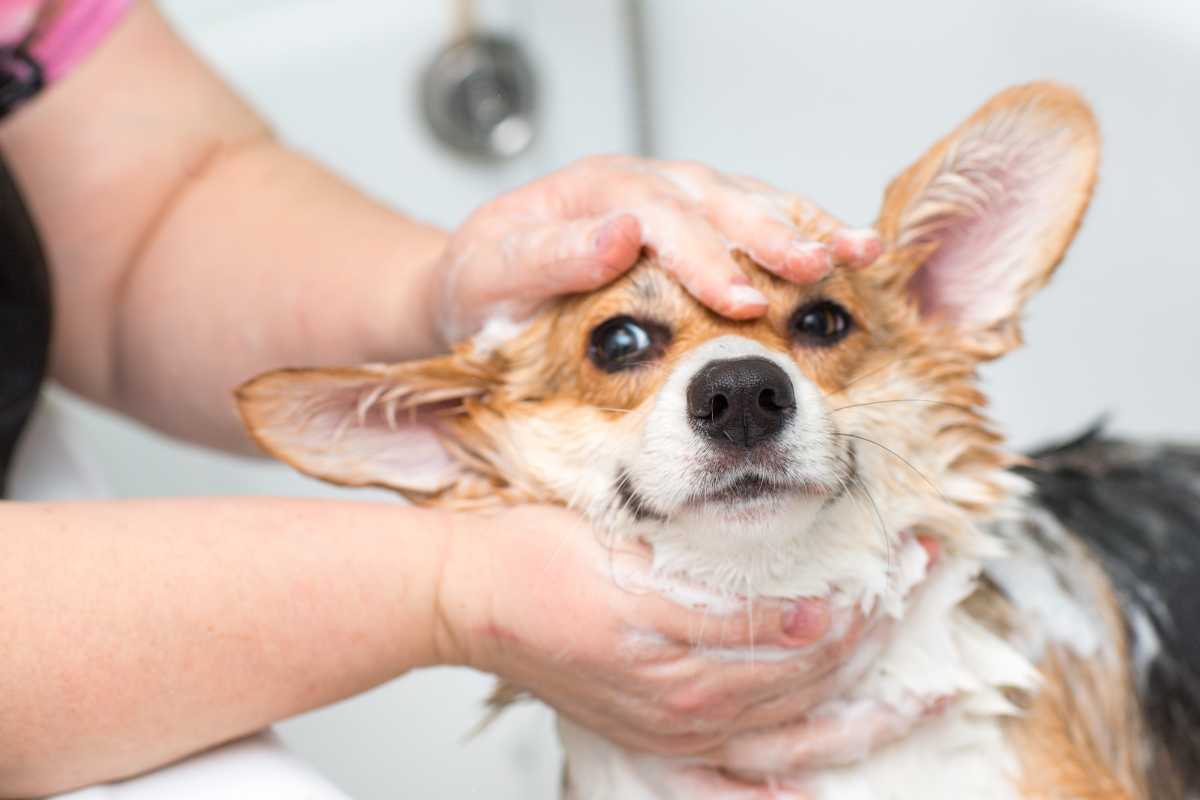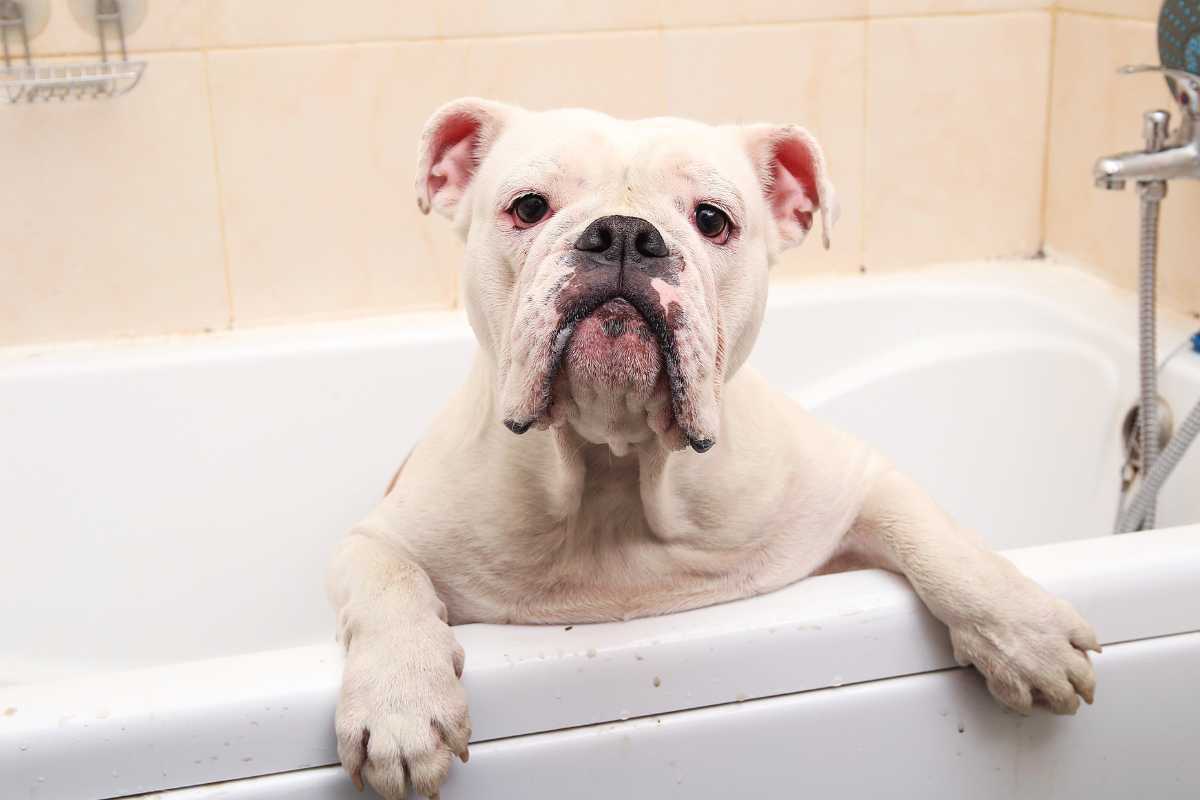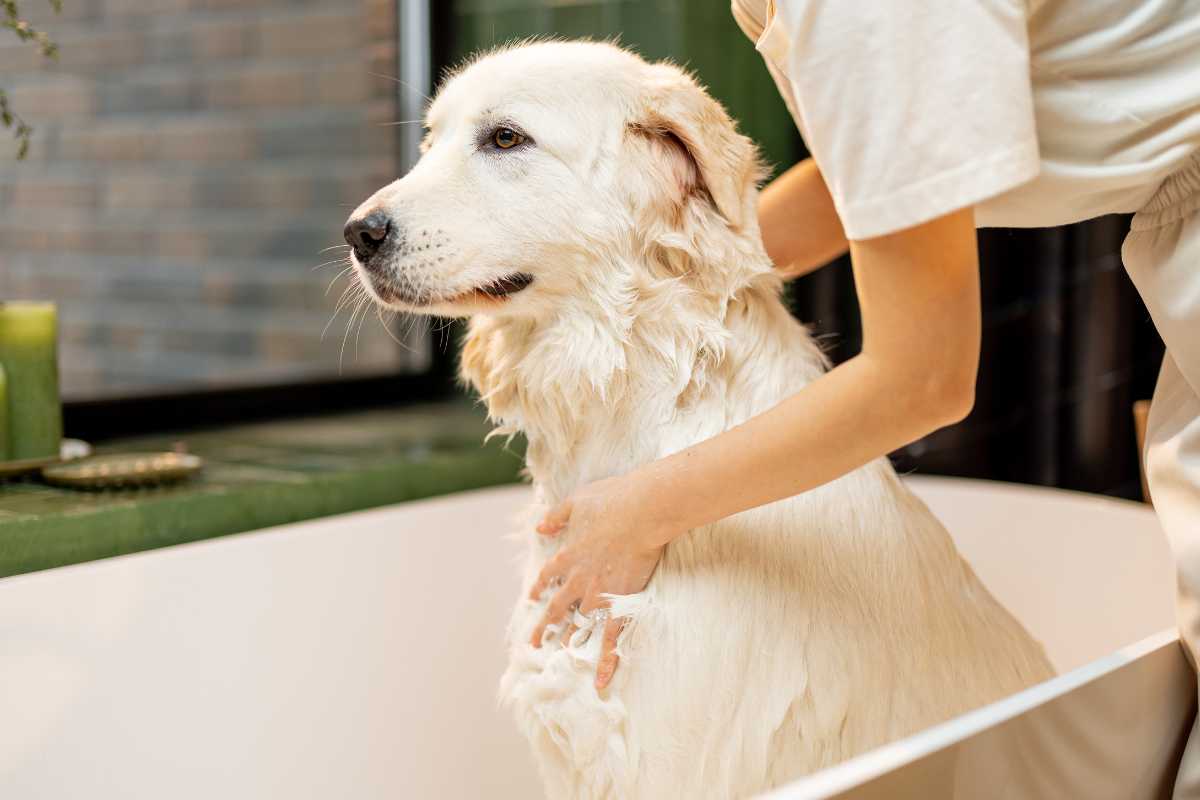Learn the Proper way to Bathe a Dog

Bathing your dog is more than just a routine chore; it's an essential part of maintaining your pet's overall health and well-being.
Bathing helps remove dirt, excess oils, and debris from your dog’s coat and skin, while also preventing skin infections and improving their hygiene.
In this article, we’ll guide you through the proper techniques to bathe your dog safely and effectively.
Whether you’re a first-time dog owner or a seasoned pet parent, this step-by-step guide will ensure you have all the tools and knowledge to give your dog a proper bath.
Why Bathing Your Dog Is Important

Bathing your dog plays a crucial role in keeping them clean and healthy. Dogs have skin that is sensitive to dirt, oils, and environmental factors like pollen and dust. Regular bathing helps to:
Remove dirt and oils: Dogs accumulate dirt and oils on their skin and fur, which can cause discomfort and lead to skin infections.
Control odor: A proper bath can help reduce your dog’s natural odor, especially in breeds that tend to produce more oils or have a strong smell.
Prevent skin issues: Bathing helps prevent conditions like dandruff, rashes, and itching that can result from uncleanliness.
Keep pests at bay: Bathing with the right products can help remove fleas, ticks, and other pests that might be living in your dog’s fur.
How Often Should You Bathe Your Dog?

The frequency of your dog’s baths depends on several factors, including their breed, activity level, and coat type. For most dogs, bathing every 4 to 6 weeks is enough. However, some factors to consider include:
Active dogs: If your dog enjoys outdoor adventures or tends to get dirty quickly, they may need more frequent baths.
Dogs with skin conditions: Some dogs, especially those with sensitive or allergic skin, may require more frequent bathing with medicated shampoos.
Long-haired breeds: Dogs with long coats or heavy undercoats might need regular baths to keep their fur clean and free of tangles.
Preparing for Your Dog’s Bath

Before you begin, it’s essential to gather everything you’ll need to make the bathing process as smooth as possible for both you and your dog.
Gather Your Supplies
Make sure you have the following items ready:
Dog shampoo: Choose a gentle, dog-specific shampoo. Avoid human shampoo, as it can be too harsh for their skin.
Conditioner (optional): For dogs with long, thick coats, conditioner can help maintain softness and reduce tangles.
Towels: Have a few towels ready for drying your dog.
A cup or gentle sprayer: You can use a cup to rinse your dog, but a handheld sprayer can make the process easier.
Dog brush or comb: This will help detangle the fur before and after the bath.
Treats: Reward your dog after the bath to make the experience more positive.
Step-by-Step Guide to Bathing Your Dog

1. Prepare the Bathing Area
Start by preparing the area where you will bathe your dog. If you’re using a bathtub, make sure the tub is clean and free of any residual cleaning products.
For small dogs, a sink or shower might be more convenient. Here are some tips:
Water temperature: Ensure the water is warm, not too hot or too cold. Dogs prefer water at a comfortable temperature, just like humans.
Non-slip surface: If your dog is in the bathtub, place a non-slip mat on the bottom to prevent them from slipping and sliding.
2. Brush Your Dog’s Coat
Before getting your dog wet, it’s important to brush their coat. Brushing helps to remove any tangles, mats, and loose fur. This step will also make the bath more effective, as the water and shampoo can reach the skin better.
For short-haired dogs, use a rubber curry brush or a soft-bristle brush.
For long-haired dogs, use a wide-tooth comb or a slicker brush.
3. Wet Your Dog’s Coat

Slowly introduce your dog to the water. Begin by wetting their coat with warm water, starting at their paws and moving upward.
Always avoid spraying directly in their face or ears. If your dog is anxious about water, you can gently pour water over their body using a cup.
Be patient and speak calmly to your dog throughout the process to help them feel at ease.
Keep the water temperature comfortable for your pet.
4. Apply Shampoo and Lather
Once your dog is fully wet, apply a dog-specific shampoo to their coat. Begin at the neck and work your way down to the tail. Be sure to lather the shampoo gently into their fur, massaging it into the skin.
Avoid getting shampoo in their eyes, ears, and mouth.
If your dog has sensitive skin, consider using a hypoallergenic or oatmeal-based shampoo.
5. Rinse Thoroughly
After lathering the shampoo, it’s time to rinse your dog. Use warm water to thoroughly wash out all the shampoo from their coat. It’s important to remove all the soap to prevent irritation.
Rinse thoroughly, ensuring that no soap residue is left behind.
6. Apply Conditioner (Optional)

If your dog’s coat tends to be dry or tangly, consider applying a dog-safe conditioner after rinsing the shampoo. Massage the conditioner into their coat and let it sit for a few minutes before rinsing.
Conditioner helps keep your dog’s fur soft and manageable, especially for longer-haired breeds.
7. Dry Your Dog
Once your dog is rinsed, use a towel to gently pat their coat and remove excess water.
It’s important not to rub vigorously, as this can cause tangles and mats. After towel drying, you can use a blow dryer on the lowest heat setting if your dog tolerates it.
Always keep the blow dryer at a safe distance and avoid using high heat, which could hurt your dog’s skin.
8. Brush Again
After drying, it’s a good idea to brush your dog’s coat again. This will help prevent tangles and keep their fur looking neat. For long-haired dogs, brushing is essential to prevent mats from forming.
Additional Tips for Bathing Your Dog

Be Gentle and Patient
Dogs can sometimes feel anxious or fearful during a bath, especially if it’s their first time.
Speak calmly, use positive reinforcement, and reward your dog with treats throughout the process. This will make the experience more enjoyable for them.
Bathing Dogs with Special Needs
Some dogs, such as senior dogs or those with medical conditions, may have special bathing needs. For example, older dogs may need a more gentle approach or a specific type of shampoo for sensitive skin.
Always consult your vet if you’re unsure of what’s best for your dog.
Conclusion: Bath Time Can Be Bonding Time

Bathing your dog is a wonderful way to strengthen the bond between you and your furry friend.
By following the proper techniques, using the right products, and being patient, you can turn bath time into a positive experience for both of you.
Remember to reward your dog with treats and affection after their bath to reinforce the positive association. With these steps in mind, you’ll be able to keep your dog clean, healthy, and happy!



You may also like